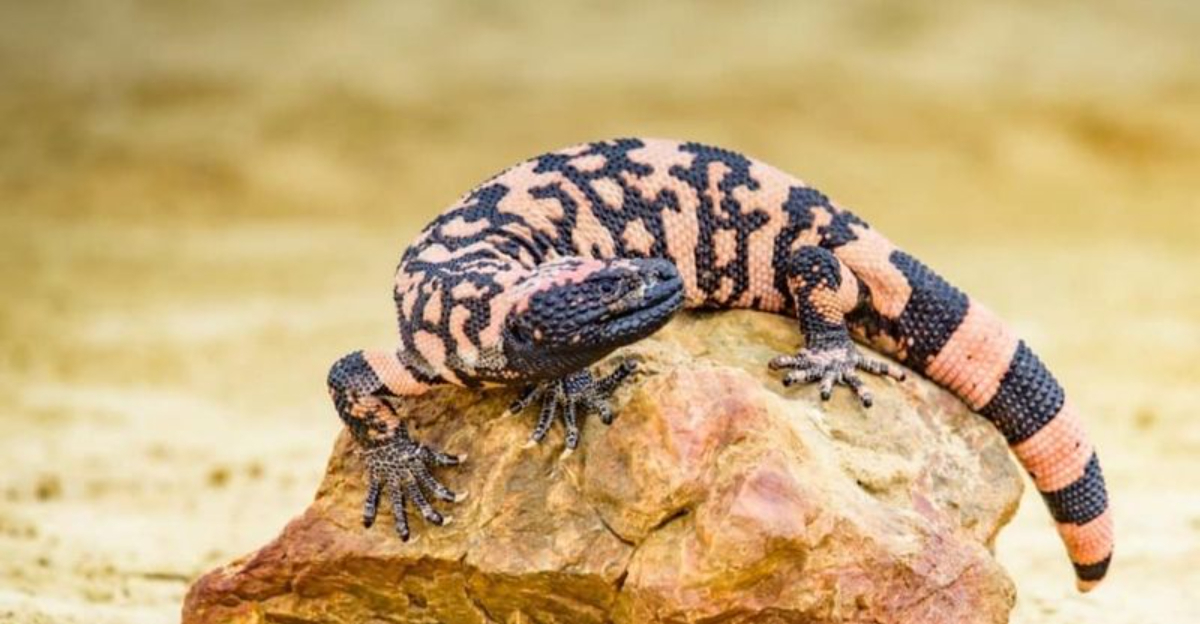The Gila monster lurks in Arizona’s desert landscape as America’s only venomous lizard. With its striking orange-black beaded skin and powerful jaws, this prehistoric-looking reptile has fascinated scientists and desert dwellers for centuries.
Despite its fearsome reputation, this remarkable creature plays a crucial role in desert ecosystems, and believe it or not, has even contributed to breakthrough medical treatments.
A Venomous Giant of the American Southwest
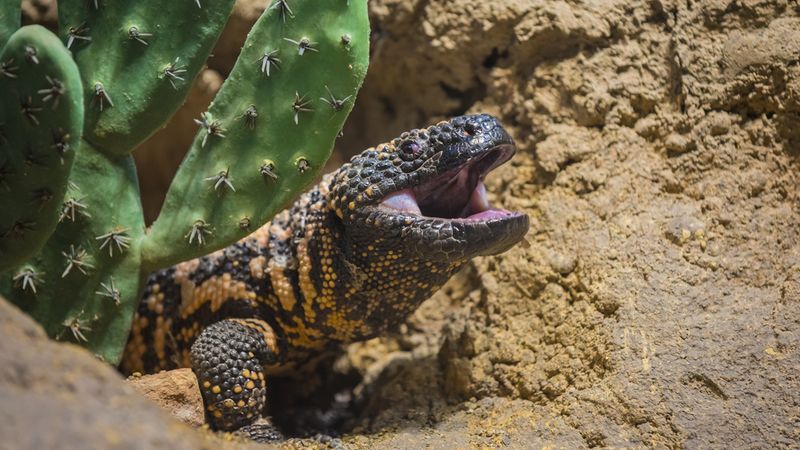
The stocky, slow-moving Gila monster patrols the Sonoran Desert like a living fossil. Named after Arizona’s Gila River, these hefty reptiles grow up to 22 inches long, making them the largest native lizards in the United States.
Their range extends beyond Arizona into parts of Nevada, Utah, New Mexico, and northern Mexico. Unlike most lizards that dart away at lightning speed, Gila monsters lumber along with prehistoric confidence.
Their venomous bite and armored skin offer protection from would-be predators.
How It Delivers Venom (Hint: It Bites and Holds On)
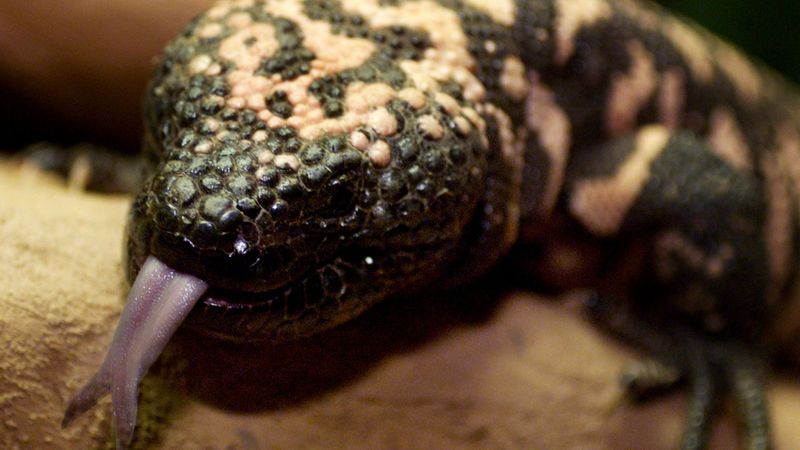
Forget lightning-fast snake strikes—Gila monsters deliver venom through a methodical, agonizing chomp. Their lower jaws contain grooved teeth that channel venom from specialized glands, similar to drainpipes guiding rainwater.
When attacking, these lizards latch on with bulldog determination, grinding their teeth to work venom deeper into the wound.
This primitive but effective delivery system relies on capillary action rather than the hypodermic-like injection seen in venomous snakes.
Is It Dangerous to Humans? Rarely—but Respect Is Key
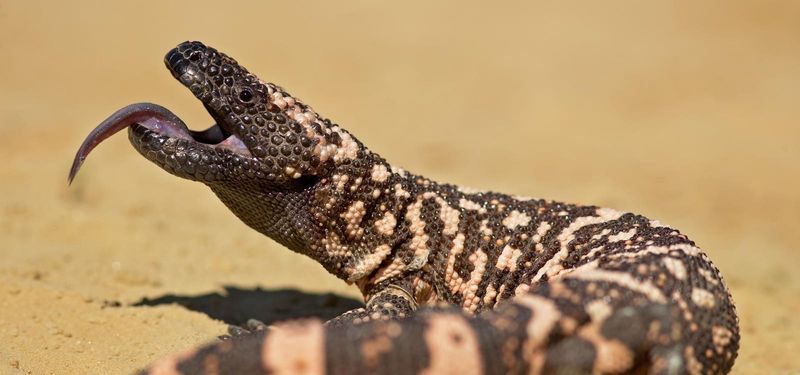
Gila monsters won’t chase you down. They max out at about one mile per hour. Their venom packs neurotoxins that cause excruciating pain, swelling, and sometimes vomiting or dizziness, but no confirmed human passings exist in medical literature.
Most bites occur when humans harass or handle these normally shy creatures. Their warning hiss sounds like escaping steam, giving alert hikers plenty of time to back away.
Smart desert explorers remember the rule: admire from a distance, never pick up.
Armor-Like Skin That Hides in Plain Sight
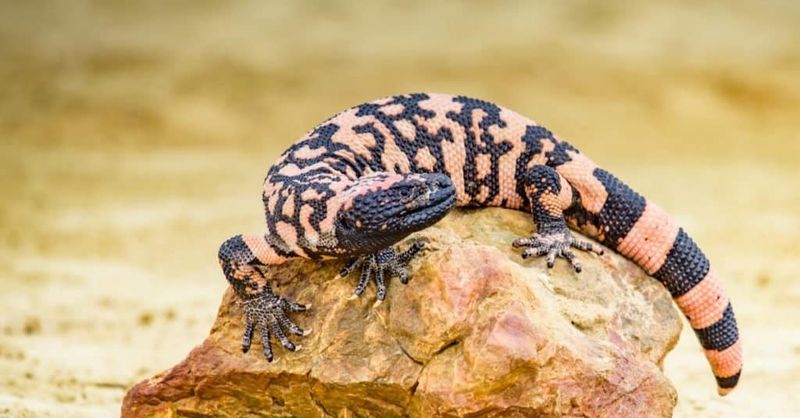
Touch a Gila monster? Never—but if you could, you’d feel what resembles bumpy, polished stones. These bead-like scales, called osteoderms, create a living chain mail that protects against predator attacks and reduces water loss in the harsh desert.
Their eye-catching orange and black pattern isn’t just fashion-forward. The vibrant coloration serves as a warning to predators while simultaneously providing remarkable camouflage among desert rocks and dappled shadows.
Nature’s perfect paradox: stand out while blending in.
A Desert Survival Expert With a Super Slow Metabolism
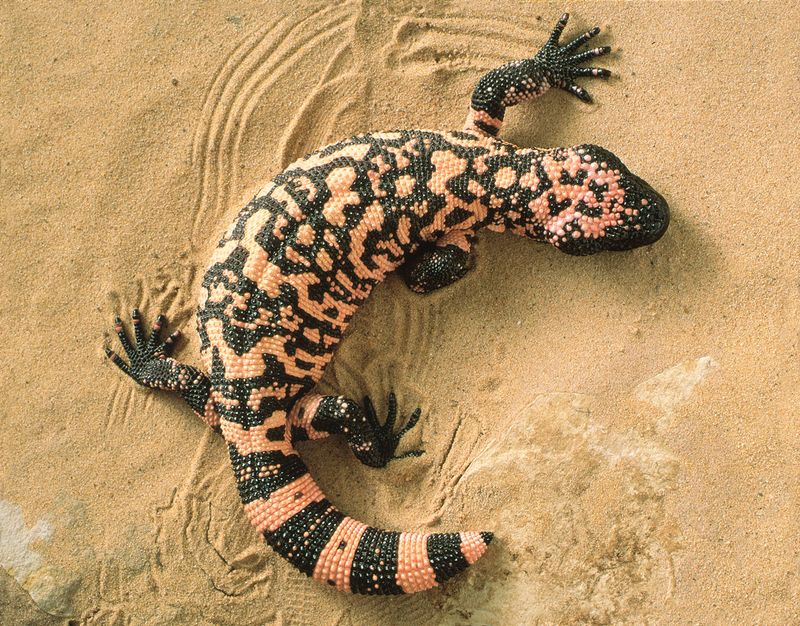
Masters of desert minimalism, Gila monsters spend an estimated 95% of their lives underground, emerging primarily during the spring breeding season or after desert rains. Their tails store fat reserves like living pantries, allowing them to survive months without meals.
This ultra-slow metabolism conserves precious energy in the food-scarce desert. One hearty meal can sustain these efficient reptiles for months in their underground bunkers.
What’s on the Menu? Eggs, Small Mammals, and Reptiles

Gila monsters possess a supernatural ability to sniff out buried treasures—specifically, eggs and baby animals hidden in nests. Their forked tongues sample air particles, guiding them to meals buried inches underground.
Once discovered, their powerful jaws make quick work of eggs, baby rabbits, small birds, and other reptiles. Young quail still in their shells make perfect high-protein packages.
Unlike most reptiles that hunt frequently, Gila monsters gorge themselves during rare feeding opportunities, converting surplus calories into tail fat.
Springtime Means Mating Season for These Solitary Reptiles
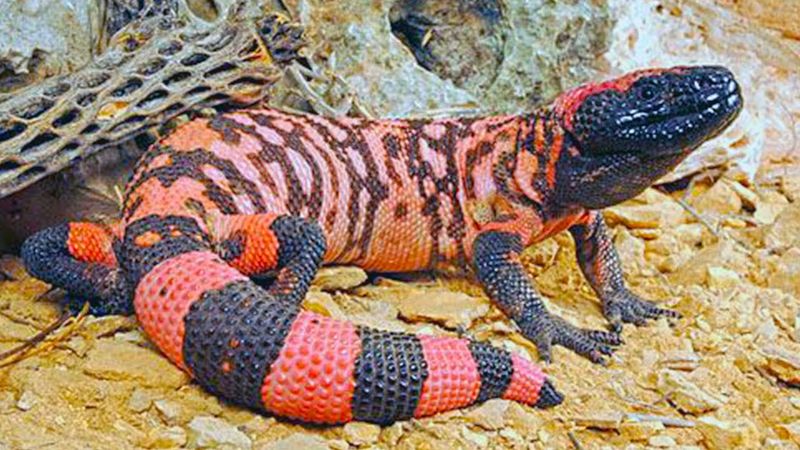
Spring transforms these normally solitary creatures into passionate suitors. Males track females through scent trails, sometimes traveling over a mile, a marathon distance for these slow-moving lizards. When rivals meet, spectacular wrestling matches ensue.
Competitors rise up on hind legs, locking in combat that resembles a prehistoric sumo match. The victorious male courts his mate through gentle nudging and body rubbing.
Females later lay 2-12 leathery eggs in underground nests, which hatch in late summer, releasing miniature versions of their orange-black parents.
Protected by Law: A Threatened Species in Arizona
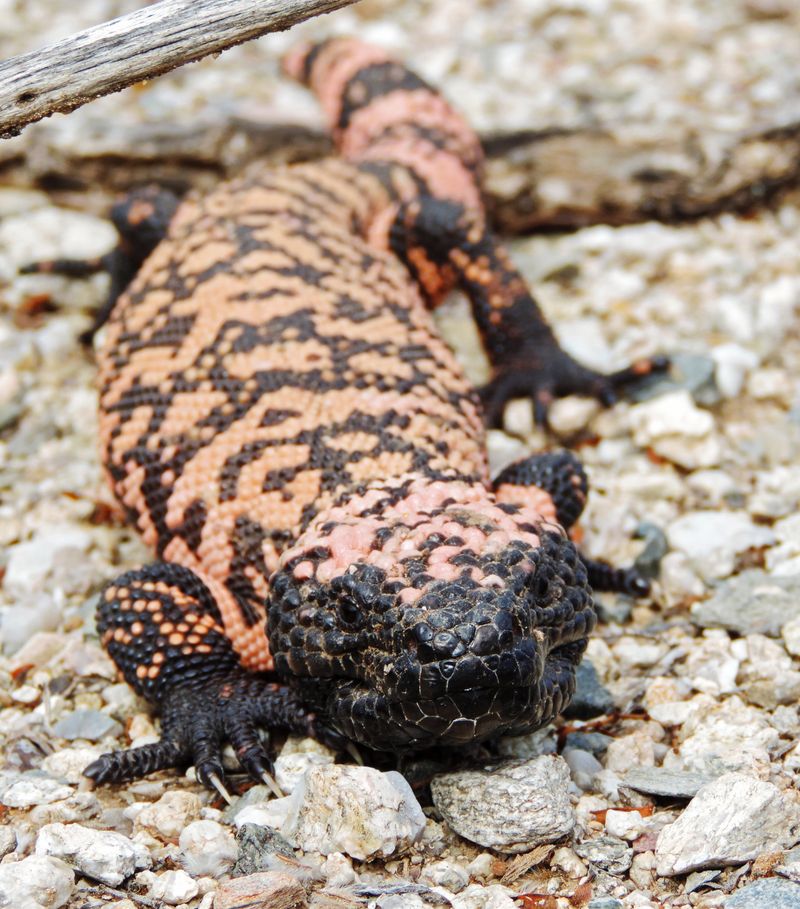
Sporting a “Near Threatened” conservation status, Gila monsters receive full legal protection throughout their range. Arizona law specifically prohibits collecting, murdering, or even harassing these ancient reptiles, with violations carrying hefty fines.
Urban sprawl poses their greatest threat as desert habitat transforms into housing developments. Their slow reproduction rate—females lay eggs only every other year—makes population recovery challenging.
Illegal collection for the exotic pet trade further threatens wild populations, despite captive breeding programs that supply the legitimate pet market.
A Medical Marvel: How Gila Monster Venom Changed Diabetes Treatment
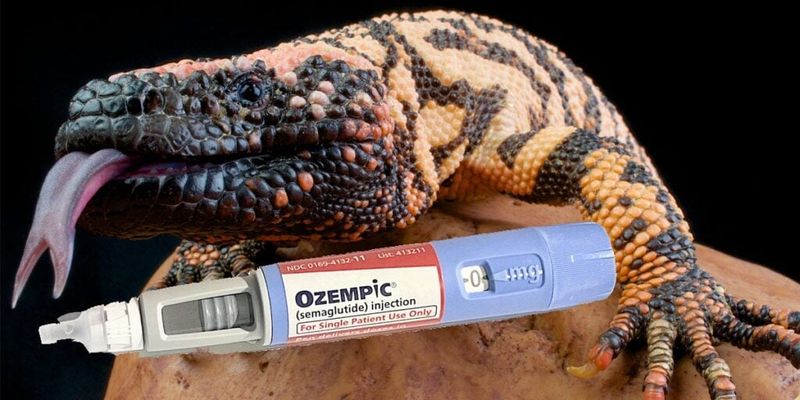
Hidden within Gila monster venom lies an unexpected gift to medicine. Scientists discovered exendin-4, a hormone-like peptide that regulates blood sugar in a remarkably human-like way.
This discovery led to the development of exenatide (brand name Byetta), a medication that helps many Type 2 diabetes patients worldwide.
The drug mimics the Gila monster’s ability to produce insulin only when blood sugar rises, something these lizards evolved to manage their feast-or-famine lifestyle.
From feared reptile to pharmaceutical hero, the Gila monster saves human lives without even knowing it.
Where to See One—Without Getting Bitten
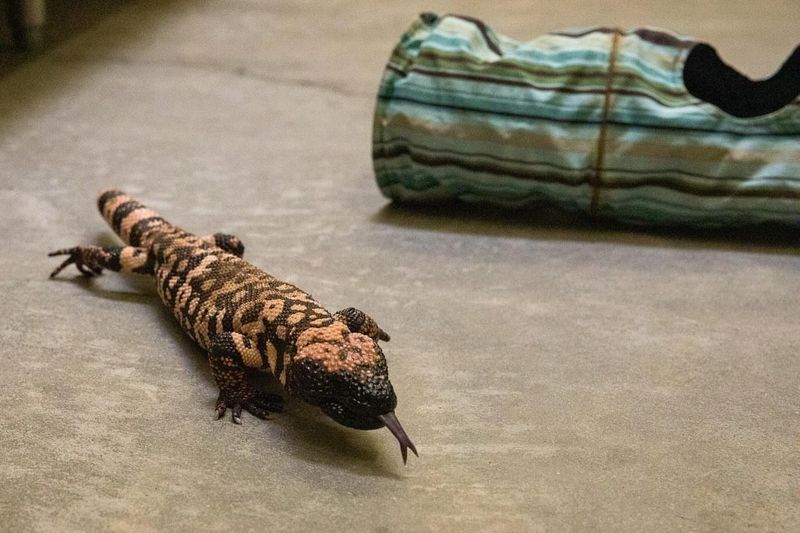
Wild Gila monster sightings remain rare events even for desert-dwelling Arizonans. Your best bet for a guaranteed encounter? Visit the renowned Arizona-Sonora Desert Museum near Tucson or Phoenix Zoo, where these reptiles reside in naturalistic habitats.
Hardcore enthusiasts might try the spring months after rain showers, when Gila monsters emerge from burrows to hunt and mate. Dawn and dusk provide prime viewing opportunities in places like Saguaro National Park.
Remember: photographing these prehistoric treasures from a respectful distance creates memories without creating medical emergencies.
